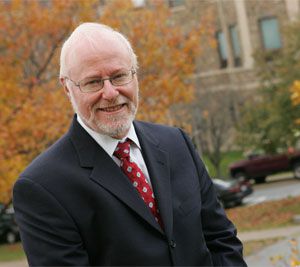KJIPUKTUK (Halifax) – University presidents and senior administrators make an awful lot of money in Nova Scotia. And it gets better. Sometimes former university presidents continue to get paid, years after they left the job.
Government rules require that universities publicly release the earnings and names of university employees who are paid more than $100,000 per year. The reports make for interesting reading.
Most people on the lists are faculty, but top earners tend to be presidents and senior administrators.
We learn that Ray Ivany, president of Acadia University in Wolfville, earned $281,820. Colin Dodds, president of Saint Mary's earned $326,382. Dalhousie's current president Richard Florizone made $390,052.
In comparison, in 2013 premier Stephen McNeil earned a mere $202,026.
Dalhousie's former president Tom Traves, who retired in 2013, continues to get paid. In 2014-15 he received $457,521.
But not because he did any work. It's because of an administrative leave provision in his contract. That clause entitles him to an extra year of salary for every five years that he was president, a job he held for 18 years.
Under the same arrangement Traves received $442,141 last year. Next year he can look forward to receiving a similar amount once again.
President Florizone's contract with Dalhousie contains a similar clause. During his administrative leave Florizone must be available for up to two days each month for advise.
John Hutton, Dalhousie Student Union Vice President (Academic and External), doesn't like it.
“It's pretty hard to swallow that university presidents are making so much money. Meanwhile they cut academic programs and raise tuition fees every year,” Hutton says.
“It really rubs us the wrong way that they are making bigger and bigger salaries. Even if they aren't working, as in Tom Traves' case.”
Dalhousie says that it is all perfectly normal.
“This sort of provision is common in Canadian university presidential contracts and is a practice consistent with the academic sabbatical model,” says Ian Nason in a press release issued by the university.
It's what you have to do to attract top-notch people, Nason says.
Nason is Dalhousie’s vice-president finance and administration. Last year he made $248,975.
It may be a common practice in Nova Scotia, but not in Ontario. Western University's president Amit Chakma had a similar administrative leave provision in his contract. When that became public knowledge, all hell broke loose.
Chakma made close to a million dollars this year. That was the sum total of his administrative leave allowance and his regular salary.
“It’s unconscionable,” said the president of the University of Western Ontario Faculty Association. “Everyone is in a rage.”
Questions were asked in the Ontario legislature. It was headlines material for weeks on end. Chakma barely survived a non-confidence vote in the university's senate.
And after all that Chakma changed his mind and returned the money.
The differences between Traves' arrangement and Chakma's are mostly cosmetic.
Unlike Chakma, Traves' payments didn't kick in until after he retired. But like Chakma he will not do any work in exchange for that money.
“Between Traves and Florizone's salary you are looking at nearly a million dollars. Those are tax dollars and tuition money,” Hutton tells the Halifax Media Co-op. “That's enough to fund the tuition of 125 students.”
"The academic mission of teaching and research is becoming secondary," Hutton says. "Instead, universities are being run like a business."
"And the people running the business are seeing larger bonuses and salaries. That raises the questions who the university is actually for."
Last Wednesday we asked Dalhousie University to comment. We will update this story when we receive a response.
Follow Robert Devet on Twitter



